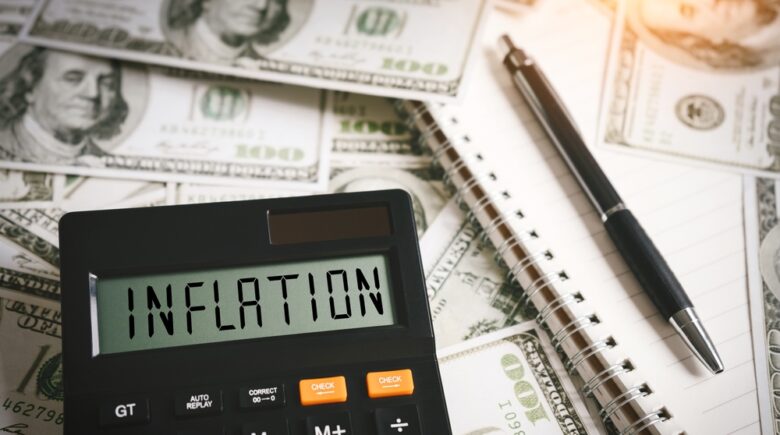Since the pandemic that froze the world in 2020, inflation has hit its most recorded high since it’s last record back in 1982. However, for as many people that know of the word, there are just as many that don’t understand what exactly inflation is, how it works, or how it even happens. It’s a confusing learning experience for a lot of people. In an attempt to dwindle the number of confused down, here’s a basic rundown to better understand the concept. As learning it should be a vital lesson for all whether as an individual, a business entity, and especially as a policy maker.
So what is inflation? To summarize, inflation is in reference to the general increase in the prices of things like goods and services over time. It is measured by percentage change in the CPI, Consumer Price Index, or sometimes other indicators. During inflation, several aspects can be influenced such as purchasing power being reduced as well as shifting interest rates. Purchasing power being a reference to how much you can buy with your money. This is often regulated and maintained by central banks so that they can promote economic stability along with economic growth.
In the case that you aren’t familiar with central banks, simply these are financial institutions that are mainly responsible for managing a country’s cache of money. Some of these central banks include the United States Federal Reserve, Japan’s Bank of Japan, and China’s People’s Bank of China.
In terms of how inflation works, it happens when the purchasing power of money decreases. This leads the standard of living seeing a decrease along with a decrease in the amount of goods and services an individual may be able to afford.
So what causes the decrease of purchasing power? Well, it can be a variety of factors. Factors including an increase of certain aspects such as increased demand and increased production costs. Another factor is changes in government policies that heavily affect currency along with any and all fluctuations involving the currency exchange rate. Currency being the value of currencies internationally.
In these cases, governments will work with central banks in order to properly maintain economics stability through a plethora of tactics such as making sure to adjust interest rates and controlling the money supply. Failure to do so can result in high inflation which leads into many negative effects such as eroded savings and reduced consumer spending.
There are several different policies that can implemented in order to maintain the needed balance. Policies such as a “Fiscal Policy” which allows governments to use taxation and spending to aid them in influencing the economy. Fiscal policies being more used in times of crisis. Meanwhile, a policy like Wage and Price Controls will allow the government to implement wage and price controls in order to directly regulate prices. There is also the Supply Side Policy which allows the government to take the measures necessary to increase the availability and affordability of goods and service.
Expectantly, a low inflation is a good sign with its marks being the purchasing power of both individuals and business rise at a slower rate as well as allowing for better financial planning and stability. However, this can be a slippery slope as an economy dealing with an extremely low inflation is put at risk of stagnation. The risk of both extreme highs and lows requiring a keen moderation as to sit nicely in the middle for the betterment of everyone.
Again, it’s important to emphasize the value of learning about not only inflation but about how the economy works. Not only as someone with the plans of entering careers that heavily revolve around such topics but as a normal everyday citizen as well as its important to learn where your role in all of it stands. As when it the economy is in dire straits, everyone feels the effects whether they realize it or not. Whether they’re a retiree on a fixed income or an individual living paycheck to paycheck or individuals holding large amounts of money through things like cash savings and loans. For each different person, maintaining their standard of living or affording basic necessities becomes harder and harder.
There is no talking about inflation without discussing a question that many ask. That question being: “why don’t we just print more money”.
It sounds like a simple solution but, in reality, it would just complicate things more. Not only on national levels but also international levels. Many have already explained the scenario in huge depths with many examples in order for people to understand. The basics of why are as simple: it would just put everything back into the same issues we have already. We would still be forced to maintain that fine, thin line of poverty and prosperity. Additionally, it’s important to note that one of the many reasons for this desperate need of balance is to ensure an equal playing field internationally. It’s the good ole checks and balances.
In conclusion, understanding inflation is crucial for individuals, businesses, and policymakers alike. Inflation refers to the general increase in prices of goods and services over time, leading to a decrease in purchasing power. Factors such as increased demand, production costs, and fluctuations in currency exchange rates can contribute to inflation. Governments and central banks work together to maintain economic stability through various policies, such as adjusting interest rates and controlling the money supply. Striking a balance between low and high inflation is essential to promote financial planning and stability. It is important for everyone to grasp the fundamentals of inflation and how the economy functions to navigate its impact on their lives. By doing so, individuals can better understand their role in the economy and the implications for their standard of living.
Since the pandemic that froze the world in 2020, inflation has hit its most recorded high since it’s last record back in 1982. However, for as many people that know of the word, there are just as many that don’t understand what exactly inflation is, how it works, or how it even happens. It’s a confusing learning experience for a lot of people. In an attempt to dwindle the number of confused down, here’s a basic rundown to better understand the concept. As learning it should be a vital lesson for all whether as an individual, a business entity, and especially as a policy maker.
So what is inflation? To summarize, inflation is in reference to the general increase in the prices of things like goods and services over time. It is measured by percentage change in the CPI, Consumer Price Index, or sometimes other indicators. During inflation, several aspects can be influenced such as purchasing power being reduced as well as shifting interest rates. Purchasing power being a reference to how much you can buy with your money. This is often regulated and maintained by central banks so that they can promote economic stability along with economic growth.
In the case that you aren’t familiar with central banks, simply these are financial institutions that are mainly responsible for managing a country’s cache of money. Some of these central banks include the United States Federal Reserve, Japan’s Bank of Japan, and China’s People’s Bank of China.
In terms of how inflation works, it happens when the purchasing power of money decreases. This leads the standard of living seeing a decrease along with a decrease in the amount of goods and services an individual may be able to afford.
So what causes the decrease of purchasing power? Well, it can be a variety of factors. Factors including an increase of certain aspects such as increased demand and increased production costs. Another factor is changes in government policies that heavily affect currency along with any and all fluctuations involving the currency exchange rate. Currency being the value of currencies internationally.
In these cases, governments will work with central banks in order to properly maintain economics stability through a plethora of tactics such as making sure to adjust interest rates and controlling the money supply. Failure to do so can result in high inflation which leads into many negative effects such as eroded savings and reduced consumer spending.
There are several different policies that can implemented in order to maintain the needed balance. Policies such as a “Fiscal Policy” which allows governments to use taxation and spending to aid them in influencing the economy. Fiscal policies being more used in times of crisis. Meanwhile, a policy like Wage and Price Controls will allow the government to implement wage and price controls in order to directly regulate prices. There is also the Supply Side Policy which allows the government to take the measures necessary to increase the availability and affordability of goods and service.
Expectantly, a low inflation is a good sign with its marks being the purchasing power of both individuals and business rise at a slower rate as well as allowing for better financial planning and stability. However, this can be a slippery slope as an economy dealing with an extremely low inflation is put at risk of stagnation. The risk of both extreme highs and lows requiring a keen moderation as to sit nicely in the middle for the betterment of everyone.
Again, it’s important to emphasize the value of learning about not only inflation but about how the economy works. Not only as someone with the plans of entering careers that heavily revolve around such topics but as a normal everyday citizen as well as its important to learn where your role in all of it stands. As when it the economy is in dire straits, everyone feels the effects whether they realize it or not. Whether they’re a retiree on a fixed income or an individual living paycheck to paycheck or individuals holding large amounts of money through things like cash savings and loans. For each different person, maintaining their standard of living or affording basic necessities becomes harder and harder.
There is no talking about inflation without discussing a question that many ask. That question being: “why don’t we just print more money”.
It sounds like a simple solution but, in reality, it would just complicate things more. Not only on national levels but also international levels. Many have already explained the scenario in huge depths with many examples in order for people to understand. The basics of why are as simple: it would just put everything back into the same issues we have already. We would still be forced to maintain that fine, thin line of poverty and prosperity. Additionally, it’s important to note that one of the many reasons for this desperate need of balance is to ensure an equal playing field internationally. It’s the good ole checks and balances.
In conclusion, understanding inflation is crucial for individuals, businesses, and policymakers alike. Inflation refers to the general increase in prices of goods and services over time, leading to a decrease in purchasing power. Factors such as increased demand, production costs, and fluctuations in currency exchange rates can contribute to inflation. Governments and central banks work together to maintain economic stability through various policies, such as adjusting interest rates and controlling the money supply. Striking a balance between low and high inflation is essential to promote financial planning and stability. It is important for everyone to grasp the fundamentals of inflation and how the economy functions to navigate its impact on their lives. By doing so, individuals can better understand their role in the economy and the implications for their standard of living.



